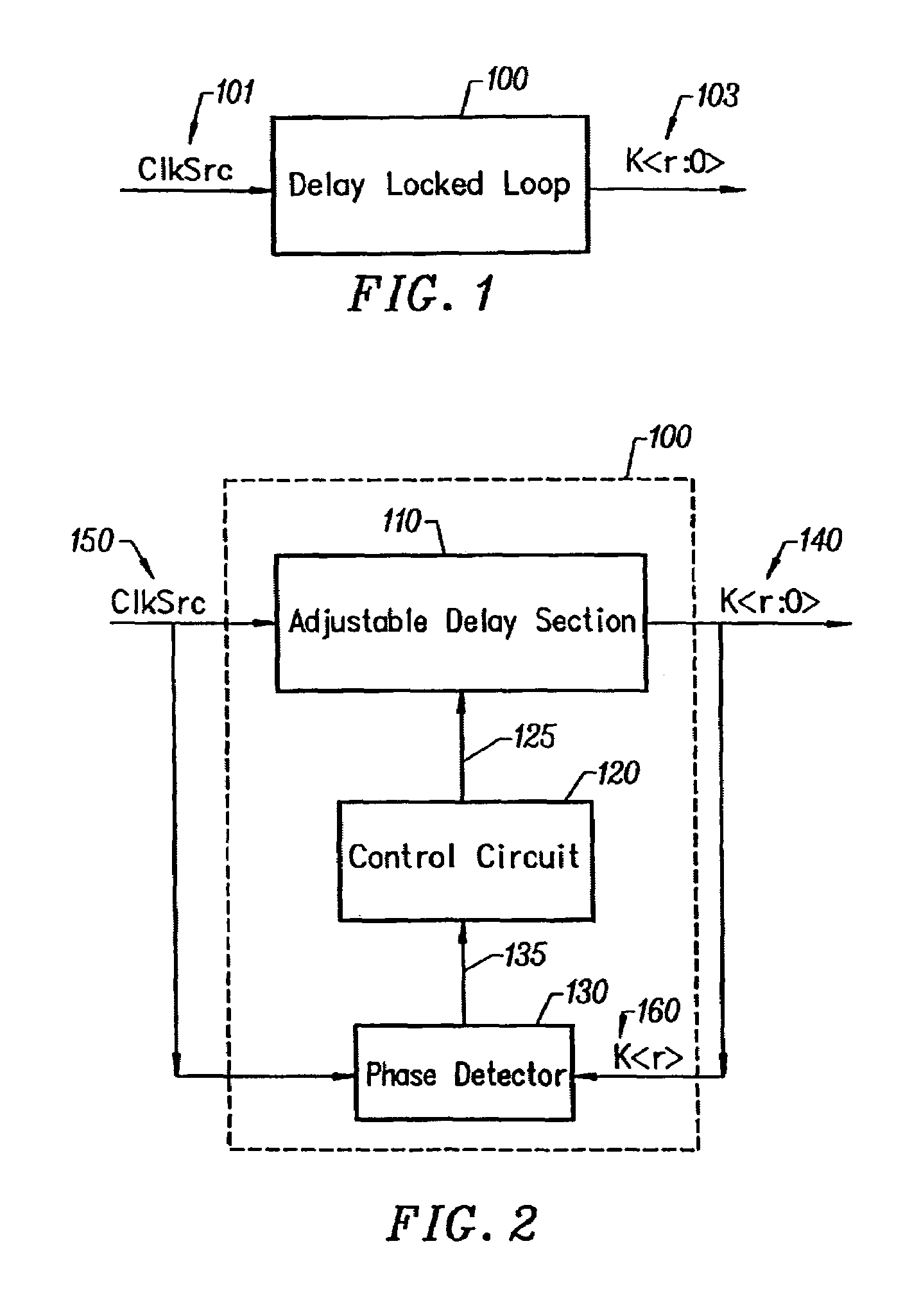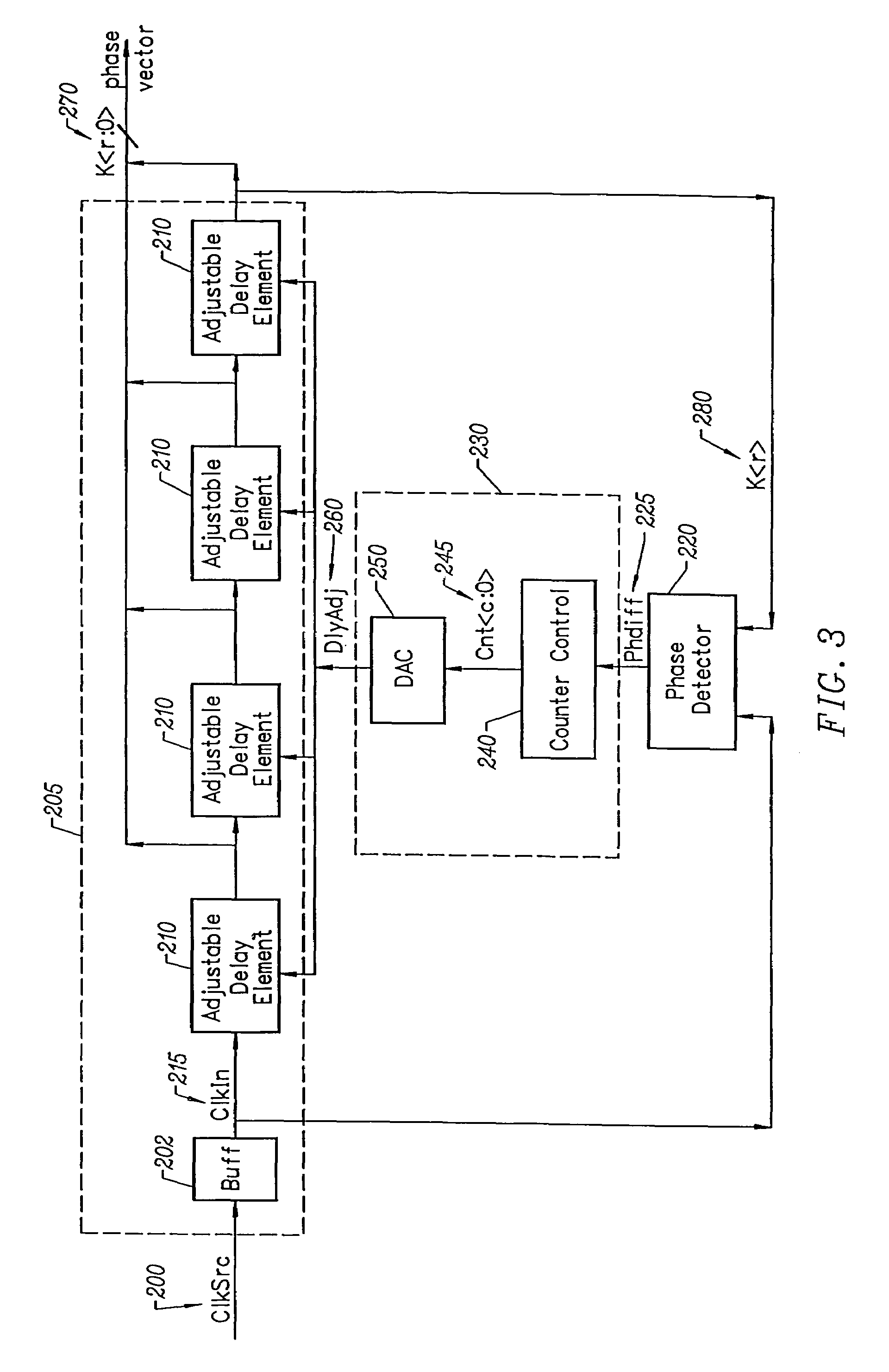Delay locked loop circuitry for clock delay adjustment
- Summary
- Abstract
- Description
- Claims
- Application Information
AI Technical Summary
Benefits of technology
Problems solved by technology
Method used
Image
Examples
Embodiment Construction
[0035]Embodiments of the present invention provide a method and circuitry to generate a set of phase vectors in a way that is more immune to noise on loop inputs including the power supplies, leading to a more stable set of phase vectors. Also, an output clock that has a predetermined phase relationship with an input clock is provided. The effect of clock buffer delays between the input clock and output clock is minimized. The delay of an adjustable delay element is adjusted with a counter and a digital to analog converter, the count in the counter digitally representing the current delay adjustment of the delay locked loop. The digital count is converted to a signal suitable for adjusting an adjustable delay element used in a delay locked loop.
[0036]The setting of current delay adjustment of the loop is digitally represented so that the setting may be stored while the loop is in a powered-down or low power state. There is quick re-acquisition of the locked state of a delay locked l...
PUM
 Login to View More
Login to View More Abstract
Description
Claims
Application Information
 Login to View More
Login to View More - R&D
- Intellectual Property
- Life Sciences
- Materials
- Tech Scout
- Unparalleled Data Quality
- Higher Quality Content
- 60% Fewer Hallucinations
Browse by: Latest US Patents, China's latest patents, Technical Efficacy Thesaurus, Application Domain, Technology Topic, Popular Technical Reports.
© 2025 PatSnap. All rights reserved.Legal|Privacy policy|Modern Slavery Act Transparency Statement|Sitemap|About US| Contact US: help@patsnap.com



